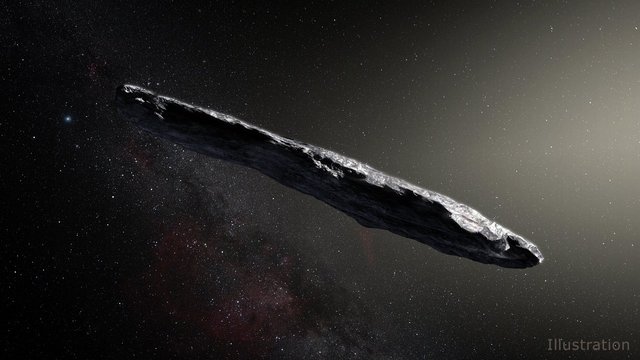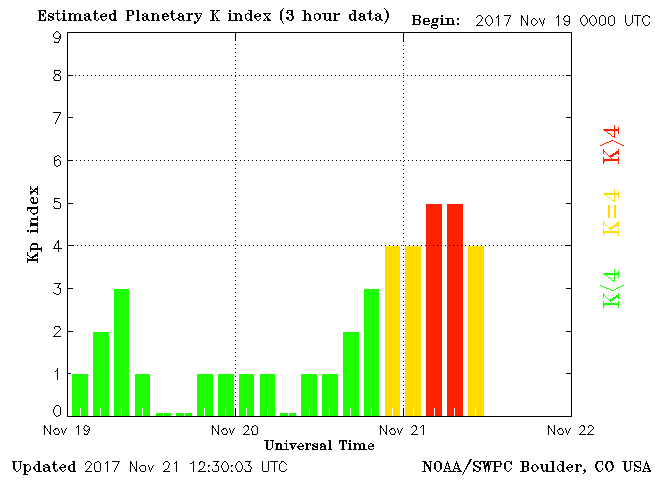Space Weather Daily Update for 21 November, 2017
Geomagnetic Storm, Cosmic Rays, Asteroid
A relatively calm 24 hours on the Earth Facing Disc of the Sun. As the central northern coronal hole moves away, the plasma filaments are trying to stay put. One coming in made a jump to the north pole of the Sun as a larger one in the center remains put.
Solar wind from the departing coronal hole increased as expected and apparently the geomagnetic issues knocked out NASA observation machines. The Planetary K-Index went yellow to red, then dropped back to yellow and then off. There are no readings. Hopefully it is just a small glitch and will be back up soon.
6.0 magnitude earthquake in the Tonga Trench near Samoa. Which is east and north of New Caledonia, which had a 6.0 magnitude aftershock.
The higher you get, the worse the cosmic rays. Seems logical.
INTEGRAL (from INTErnational Gamma-Ray Astrophysics Laboratory) observes the ever-changing, powerful, and violent cosmos. It is the first space observatory that can simultaneously observe objects in gamma rays, X-rays, and visible light.
A new house sized object was added to the November NEOs.
Meanwhile, Solar System's First Interstellar Visitor Dazzles Scientists. The more concerning thing to me is that this spear "zipped" through our solar system and was only just discovered in October, because it was hard to see inert rock. What other objects could be zipping through our galaxy crossing through other star systems? Why is this object so much different than others that reside within our solar system? What made this object start flying through the galaxy, when we would suppose it should flying into the galaxy and not to the outer edges where our Solar System is?

The asteroid, named 'Oumuamua by its discoverers, is up to one-quarter mile (400 meters) long and highly-elongated-perhaps 10 times as long as it is wide. That aspect ratio is greater than that of any asteroid or comet observed in our solar system to date. While its elongated shape is quite surprising, and unlike asteroids seen in our solar system, it may provide new clues into how other solar systems formed.
~ Ben Davidson (Suspicious0bservers ) at SuspiciousObservers.org
I am not affiliated with Ben Davidson or his work. I am a subscriber to SuspiciousObservers YouTube channel.
- Space Weather News
- Quake Watch
- Earth Changes - mobile app
- STARWATER
Space Weather


Source: http://www.swpc.noaa.gov/products/planetary-k-index
Asteroid Watch
Average distance between Earth and the moon is about 239,000 miles (385,000 kilometers).
Source: https://www.jpl.nasa.gov/asteroidwatch/
| Object | Flyby Date | AU distance | Approximate Sixe |
|---|---|---|---|
| (2017 VD13) | 2017-Nov-22 | 0.03366 | 27 m - 61 m |
| (2017 VA15) | 2017-Nov-22 | 0.02066 | 26 m - 59 m |
| (2017 VZ14) | 2017-Nov-24 | 0.00817 | 28 m - 63 m |
| (2017 VY13) | 2017-Nov-25 | 0.00519 | 13 m - 30 m |
| (2017 WK1) | 2017-Nov-28 | 0.01995 | 11 m - 24 m |
Close Approach Database
Source: https://cneos.jpl.nasa.gov/ca/
Let the positive energy sing!
More Power to the Minnows!!



